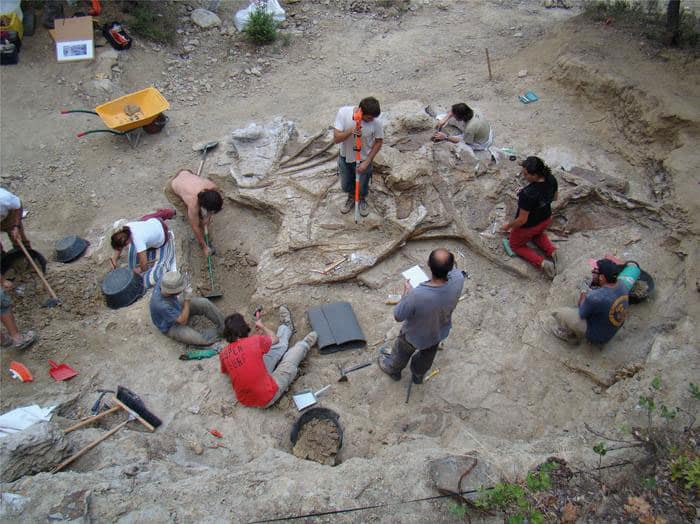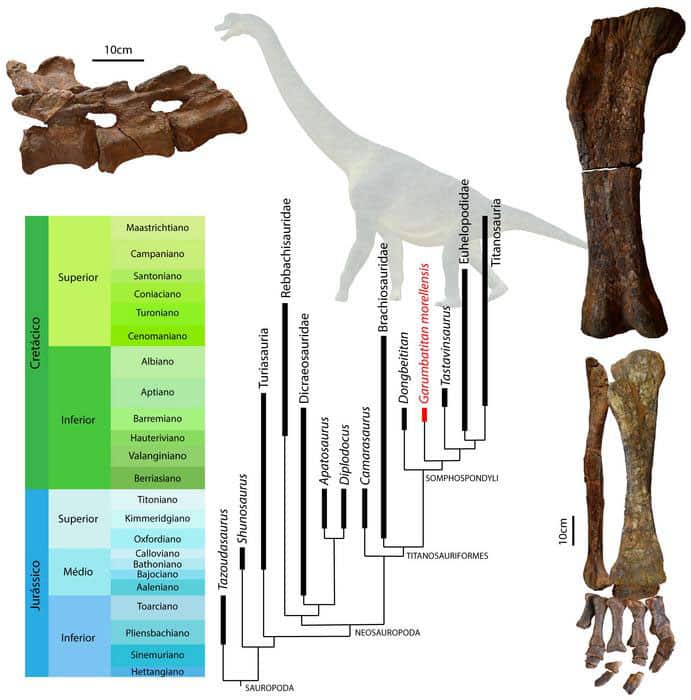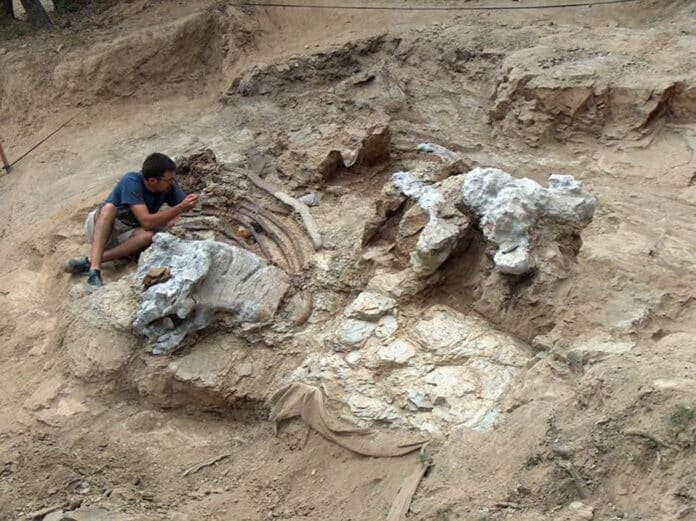The Early Cretaceous period, which lasted 122 million years ago, is well represented in the sedimentary deposits in the Els Ports de Morella (Spain). Particularly in the Morella region, some of the first dinosaur fossils unearthed in Spain were uncovered. Numerous fossils of Mesozoic vertebrates, some of which are particularly pertinent, have been discovered recently, including a significant collection of ornithopod dinosaurs, Morelladon beltrani, and sauropod dinosaurs.
A new study reports about the new sauropod dinosaur that lived in the Iberian Peninsula 122 million years ago. Garumbatitan morellensis, a new species of dinosaur, was named based on fossils found in Morella (Castelló, Spain), and it allowed scientists to increase the diversity of dinosaurs known from one of the most significant fossil records from the Early Cretaceous in Europe.
This finding was made by a group of paleontologists from Portugal and Spain. The newly discovered dinosaur species, Garumbatitan morellensis, is a member of the sauropod family, including quadrupedal herbivorous dinosaurs with long necks and tails that could grow to enormous sizes.

Scientists found the remains of this dinosaur in the sediments that emerged in the Morella locality in 2005 and 2008 in the Sant Antoni de la Vespa fossil site. One of the highest densities of sauropod dinosaur bones from the European Lower Cretaceous was found in this deposit, where parts from at least four individuals, including three that belonged to this new species, were recognized. Thus, Sant Antoni de la Vespa is among the crucial sites in Spain at this time for studying dinosaur faunas.
Pedro Mocho, leader of this study, paleontologist of Instituto Dom Luiz, Faculty of Sciences of the University of Lisbon (Portugal), said, “One of the individuals we found stands out for its large size, with vertebrae more than one meter wide, and a femur that could reach two meters in length. We found two almost complete and articulated feet in this deposit, particularly rare in the geological record.”
Scientists identified anatomical characteristics that differentiate this dinosaur from other sauropod dinosaurs. The femur’s distinctive morphology (the leg’s upper bone) and the components that make up the foot define Garumbatitan. The femur resembles the femora of more contemporary sauropods from the Late Cretaceous in terms of form. The kinship links of Garumbatitan morellensis and other sauropod dinosaurs from the Iberian Peninsula’s Early Cretaceous are also examined in this study. One of the earliest members of the sauropod suborder Somphospondyli, which was one of the most diversified and numerous during the Cretaceous and went extinct at the end of the Mesozoic, is Garumbatitan.
Last but not least, this study emphasizes the incredibly complex evolutionary history of sauropods from the European Cretaceous, particularly those from the Iberian Peninsula, with species related to lineages present in Asia and North America as well as some groups related to forms from the African continent. These findings imply that there have been times when species have dispersed between these continents. All of the fossil materials discovered in this deposit will eventually be restored, and this will provide valuable information for understanding the early evolution of the sauropods that dominated the dinosaur faunas throughout the final million years of the Mesozoic era.

Pedro Mocho said, “Our study highlights the enormous complexity of the evolutionary history of sauropods from the European Cretaceous – in particular, from the Iberian Peninsula, with species related to lineages present in Asia and North America, as well as some groups related to forms from the African continent. Our results suggest the existence of periods of faunal dispersal between these continents.”
Francisco Ortega, co-author of this study, Grupo de Biología Evolutiva of the Universidad Nacional de Educación a Distancia (UNED, Spain), said, “The future restoration of all fossil materials found in this deposit will add important information to understand the initial evolution of this group of sauropods that dominated dinosaur faunas during the last million years of the Mesozoic era.”
Journal Reference:
- Pedro Mocho, Fernando Escaso, José M Gasulla et al. A new sauropod dinosaur from the Lower Cretaceous of Morella (Spain) provides new insights on the evolutionary history of Iberian somphospondylan titanosauriforms. Zoological Journal of the Linnean Society. DOI: 10.1093/zoolinnean/zlad124
